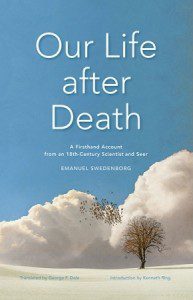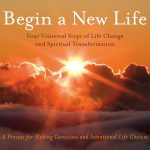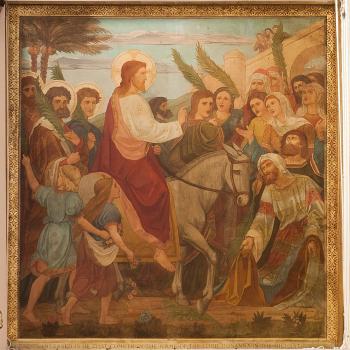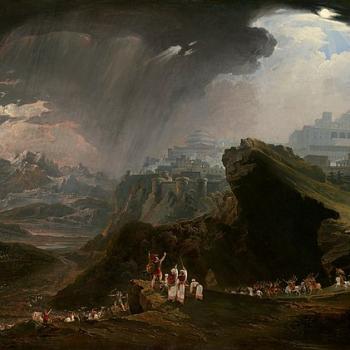 This blog post is a reflection on the book Our Life After Death, recently published by the Swedenborg Foundation and currently featured in the Patheos Book Club. The book is essentially a long excerpt from Emanuel Swedenborg’s Heaven and Hell, focusing primarily on what happens in the days, weeks, and months after we die, as we are prepared for and enter either heaven or hell, in an intermediate ground called “the world of spirits.” (The terminology here can be a little confusing: Swedenborg refers to the whole realm of the afterlife, including heaven, hell, and this “in-between” space as “the spiritual world”; “the world of spirits” refers to that in-between place specifically). The full work, Heaven and Hell, is divided into three sections; the first section, on heaven, is the longest; the last section, on hell, is the shortest; and it is almost the entire middle section, on the world of spirits, that has been excerpted for Our Life After Death. It is this section that answers many of the most pressing questions people have about life after death: what happens to me immediately when I die? Will I see my friends and loved ones? Will I still be myself?
This blog post is a reflection on the book Our Life After Death, recently published by the Swedenborg Foundation and currently featured in the Patheos Book Club. The book is essentially a long excerpt from Emanuel Swedenborg’s Heaven and Hell, focusing primarily on what happens in the days, weeks, and months after we die, as we are prepared for and enter either heaven or hell, in an intermediate ground called “the world of spirits.” (The terminology here can be a little confusing: Swedenborg refers to the whole realm of the afterlife, including heaven, hell, and this “in-between” space as “the spiritual world”; “the world of spirits” refers to that in-between place specifically). The full work, Heaven and Hell, is divided into three sections; the first section, on heaven, is the longest; the last section, on hell, is the shortest; and it is almost the entire middle section, on the world of spirits, that has been excerpted for Our Life After Death. It is this section that answers many of the most pressing questions people have about life after death: what happens to me immediately when I die? Will I see my friends and loved ones? Will I still be myself?
What this book is not is a first-person memoir, of the “to-heaven-and-back” genre that has flourished so much in the last decade (a phenomenon explored recently in a piece in the online literary magazine The Millions). I’m afraid that those who come to this book looking for an exciting story about a man’s near-death experience are going to be disappointed. This book is not so much a travelogue of heaven and hell as it is a systematic description of the way the spiritual world works, and particularly what it means for a person to be heavenly or hellish. That may sound dry and boring to some – and to be fair, I suspect some people will find the book to be so – but besides the spiritual anthropology and geography, the book does contain vivid descriptions of a very real and almost tangible life after this one.
The spiritual world described here is not an abstract, airy nothingness; in that way it is decidedly un-gnostic. Swedenborg writes that when we see spiritual objects with our spiritual eyes, it is very much like seeing natural objects with our natural eyes. So, for example, he writes of spirits who “live in gardens where you can see flower beds and lawns beautifully marked off, surrounded by rows of trees with arcades and promenades.” And he writes that spirits and angels are in a complete human form, that the idea of the spirit as something ethereal is mistaken:
Years and years of daily experience have witnessed to me that after separation from the body the human spirit is a person and is in a similar form. I have seen this thousands of times, I have heard such spirits, and I have talked with them even about the fact that people in the world do not believe that they are what they are, and that scholars think people who do believe are simpletons. Spirits are heartsick over the fact that this kind of ignorance is still common in the world and especially in the church. They say, however, that this belief stems especially from academics who have thought about the soul on the basis of physical sensory reality. The only concept this can yield is one of pure thought, and when this lacks any medium in which and on the basis of which it is examined, it is like some volatile form of pure ether that can only dissipate when the body dies.
The spirituality described here is not an abstract, bodiless one – it as an embodied, active, human spirituality, in a spiritual body that has much in common with the natural one.
This idea of an embodied spiritual world does not cheapen the glory or beauty of heaven. And the fact that spiritual things have earthly forms and can be pictured in physical things is not a new idea; all the Biblical prophets described visions of heaven as including streets and animals and plants and people. Swedenborg explains all of this through the concept of correspondences – that is, that everything that exists in this physical world is a natural manifestation of a spiritual reality. So, for example, physical light exists and allows us to see with our physical eyes because there is a spiritual light that allows our spirits to see – a connection that people intuitively understand (e.g., saying “I see,” when we perceive something). As a result, people in the spiritual world live in surroundings that reflect, by correspondence, their internal states. And so, for example, we find this description:
If people have loved learning and have developed their rational ability accordingly and thereby gained intelligence, and if they have acknowledged the Divine Being at the same time, their delight in knowledge and pleasure in reasoning changes in the other life into a spiritual pleasure that is the delight of firsthand knowledge of what is good and true. They live in gardens where you can see flower beds and lawns beautifully marked off, surrounded by rows of trees with arcades and promenades. The trees and flowers change from day to day. Looking at all this brings pleasure to their minds generally, and the specific changes make it constantly new. Further, since all this corresponds to divine qualities, and since these people are drawn to their knowledge of correspondences, they are constantly being filled with new insights and thereby having their spiritual rational faculty perfected. They enjoy these pleasures because gardens, flower beds, lawns, and trees correspond to information, insights, and the intelligence that ensues.
The image that emerges is one of a very real place – a place that we can actually picture living, a continuation of this life, but in a more perfect form.
Of course, this form is not beautiful for everyone. And the central thesis for this book is this: that a person’s dominant love determines their eternal surroundings, their final home. In most general terms, if a person has loved himself or this world above all else, he is prepared in the world of spirits for hell. If a person has loved God and his neighbor above all else, though, he is prepared there for heaven.
The world of spirits, then, is primarily a place where a person’s dominant love – who that person really is – is made clear, both to themselves and others. For those who are being prepared for hell, they lose their ability to counterfeit honesty and goodness. For those who are being prepared for heaven, they rid themselves of lingering bad habits, and are instructed. It is in the ridding themselves of bad habits that this “world of spirits” bears most similarity to the Catholic concept of purgatory. But there is a major difference: in Swedenborg’s description, there is no concept of retributive justice, of purgatory as a place where spirits receive the just deserts of their wicked deeds in the world. In fact he goes so far as to say that “no one suffers any punishment for evil things done in the world, only for current evil deeds.” Still, those who have chosen to live for themselves above others will continue to act as they willed to do in the world, and so punishments do occur for these – but only for the purpose of amendment, not for payback: “The reason they are punished is that fear of punishment is the only means of taming their evils in that state.”
The picture that emerges is one of a loving, merciful God who allows people to choose where they will live eternally. This does not mean that hell is any less hell – those who are there are punished when they try to act out on their malicious intentions, and if they eventually learn to restrain themselves, still they are in the misery of not being able to act out their desires. But it is a choice freely made. As C.S. Lewis famously put it in The Great Divorce:
There are only two kinds of people in the end: those who say to God, “Thy will be done,” and those to whom God says, in the end, “Thy will be done.” All that are in Hell, choose it. Without that self-choice there could be no Hell. No soul that seriously and constantly desires joy will ever miss it. Those who seek find. Those who knock it is opened.”
Our Life After Death illustrates and describes just how that choice is made and carried out.
(One final note: I don’t want to focus too much on the minutiae of translation, but one particular translation choice in this edition, which is taken from Dole’s full translation of Heaven and Hell, is to translate the Latin “charitas” as “thoughtfulness” rather than “charity.” The choice was made, I think, because of the misconception of “charity” as consisting only in donating money to various causes; but “thoughtfulness” to my mind does not begin to do justice to the original concept of charity as true neighborly love.)












